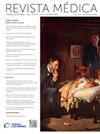Atención de urgencia por ideación suicida en Chile, periodo 2020 al 2022
IF 0.4
Q4 MEDICINE, GENERAL & INTERNAL
引用次数: 0
Abstract
Introduction
Suicidal ideation is a common risk factor associated with suicide and an important indicator for its prevention. The objective of this study is to describe the rate of emergency care for suicidal ideation in the population served in the Chilean public health network during the years 2020 to 2022.
Methods
Descriptive study, based on records from the Department of Statistics and Health Information, of beneficiaries with emergency care for suicidal ideation. The rate of emergency care for suicidal ideation was estimated at the country and geographic region level, as well as with regards to the proportion of care by age group, type of health facility and month of occurrence. Pearson's Chi2 test was applied in STATA version 14.
Results
There were 15,325 emergency visits for suicidal ideation in the period studied. In 2020, the rate was 0.03 × 10,000 and 5.8 × 10,000 in 2022, higher in the central zone. Care predominated in the 15 to 64 year-old group and in hospital settings (p < 0.001).
Conclusions
An increase in the rate of emergency care for suicidal ideation is observed, with differences by age group and type of health facility. However, given the limited study time, these figures should be analyzed with caution.
2020 年至 2022 年期间智利对有自杀倾向者的紧急护理
导言:自杀意念是与自杀相关的常见风险因素,也是预防自杀的重要指标。本研究旨在描述 2020 年至 2022 年期间,智利公共卫生网络所服务人群中因自杀意念而接受急诊治疗的比例。研究估算了国家和地理区域层面的自杀意念急诊率,以及按年龄组、医疗机构类型和发生月份划分的急诊比例。在 STATA 14 版中进行了 Pearson's Chi2 检验。2020 年的发病率为 0.03 × 10,000,2022 年为 5.8 × 10,000,中部地区的发病率较高。15 至 64 岁年龄组和医院中的就诊率较高(p < 0.001)。结论:研究发现,自杀意念急诊就诊率有所上升,不同年龄组和医疗机构类型的就诊率存在差异。然而,由于研究时间有限,在分析这些数据时应谨慎。
本文章由计算机程序翻译,如有差异,请以英文原文为准。
求助全文
约1分钟内获得全文
求助全文
来源期刊

Revista Medica Clinica Las Condes
MEDICINE, GENERAL & INTERNAL-
CiteScore
0.80
自引率
0.00%
发文量
65
审稿时长
81 days
 求助内容:
求助内容: 应助结果提醒方式:
应助结果提醒方式:


